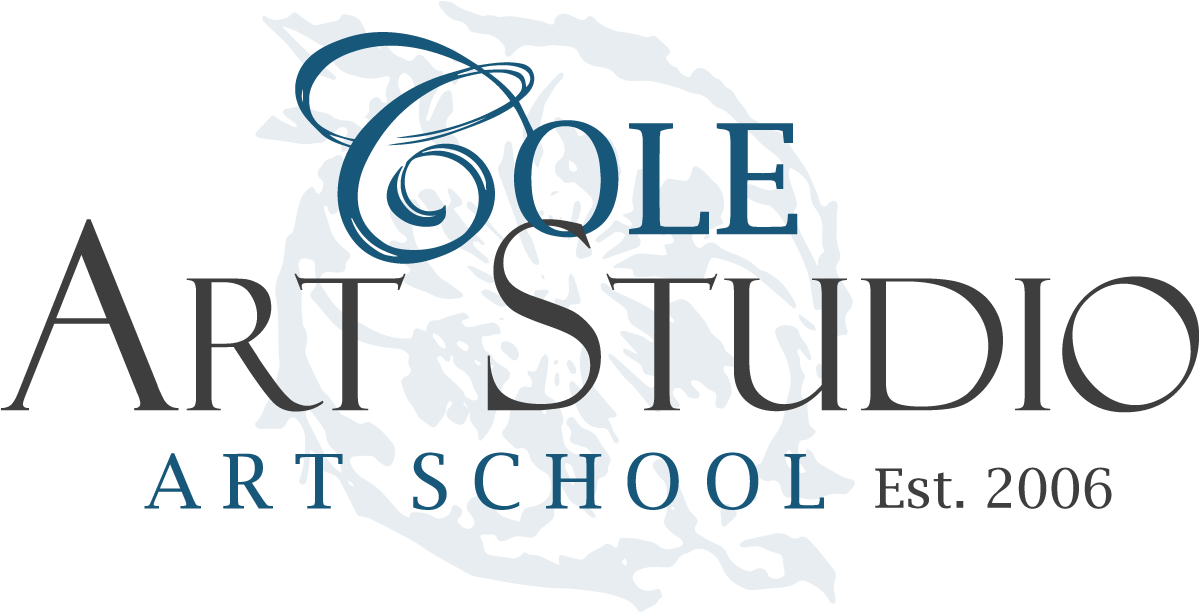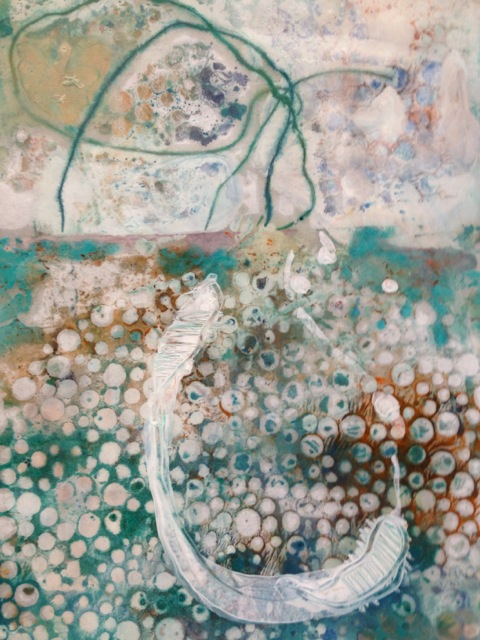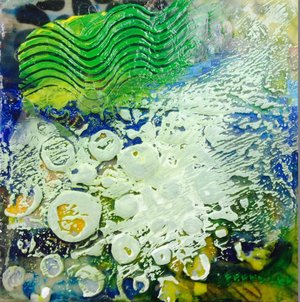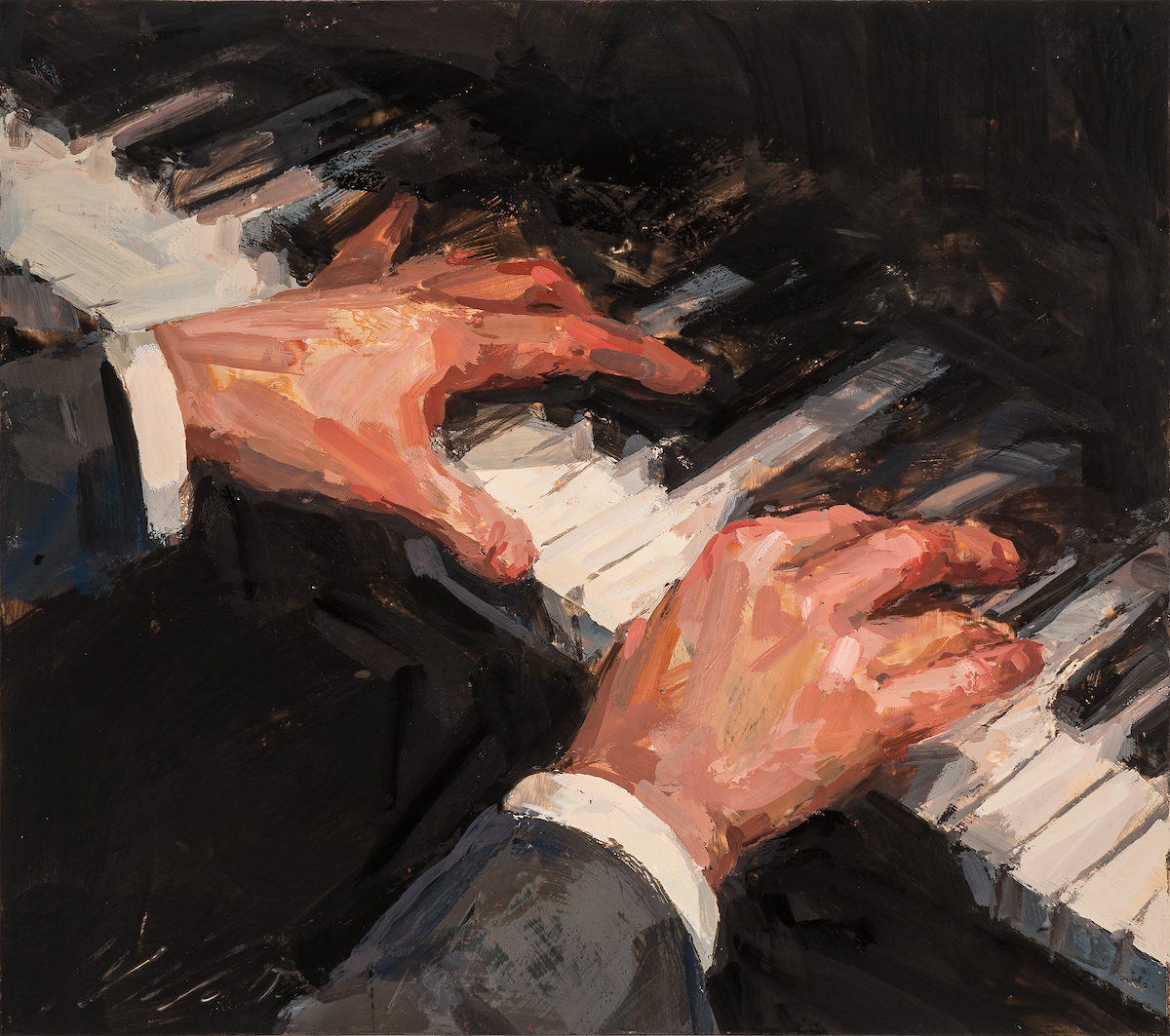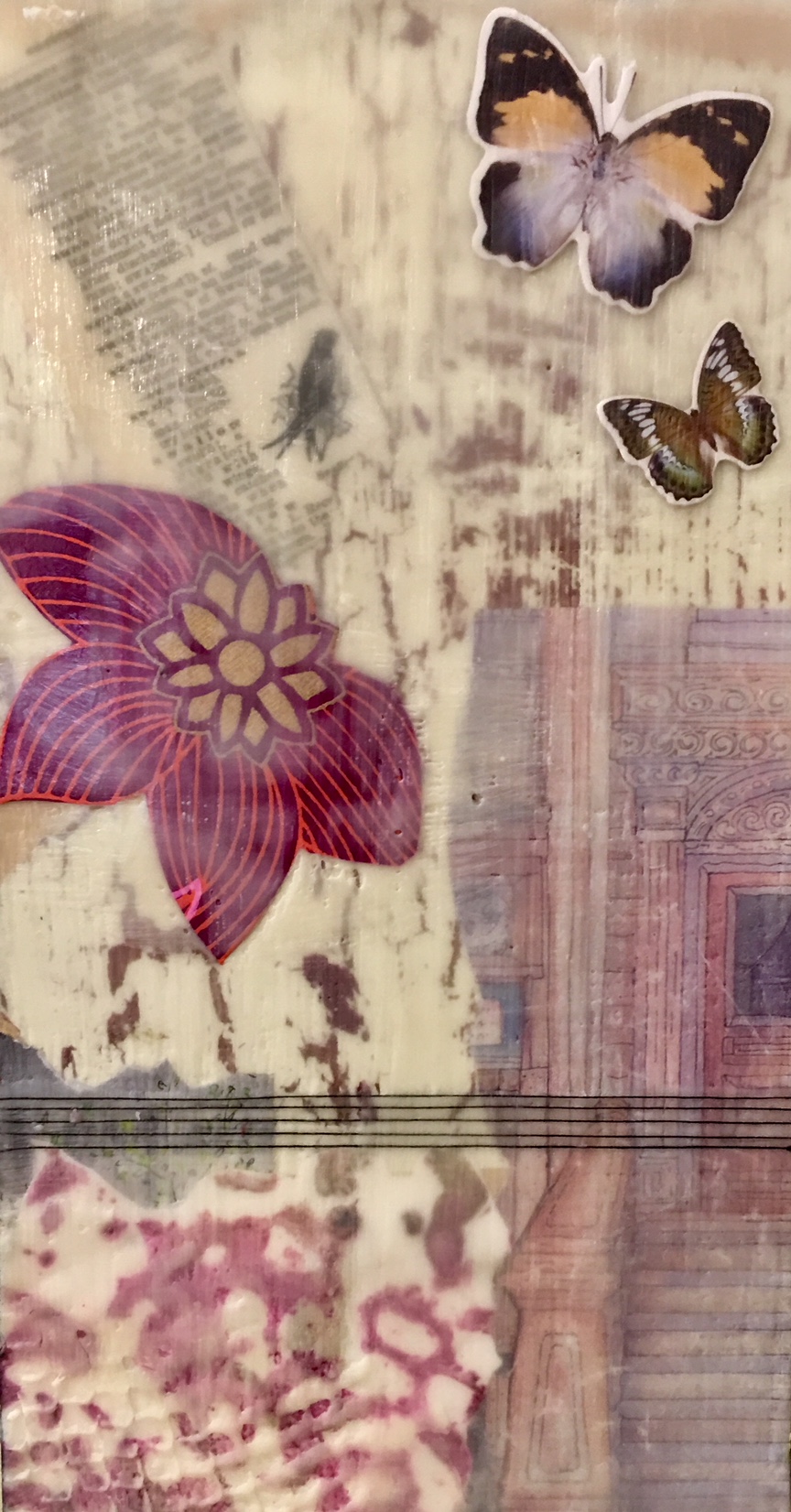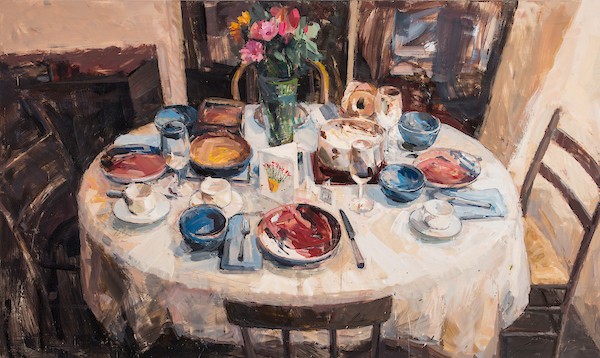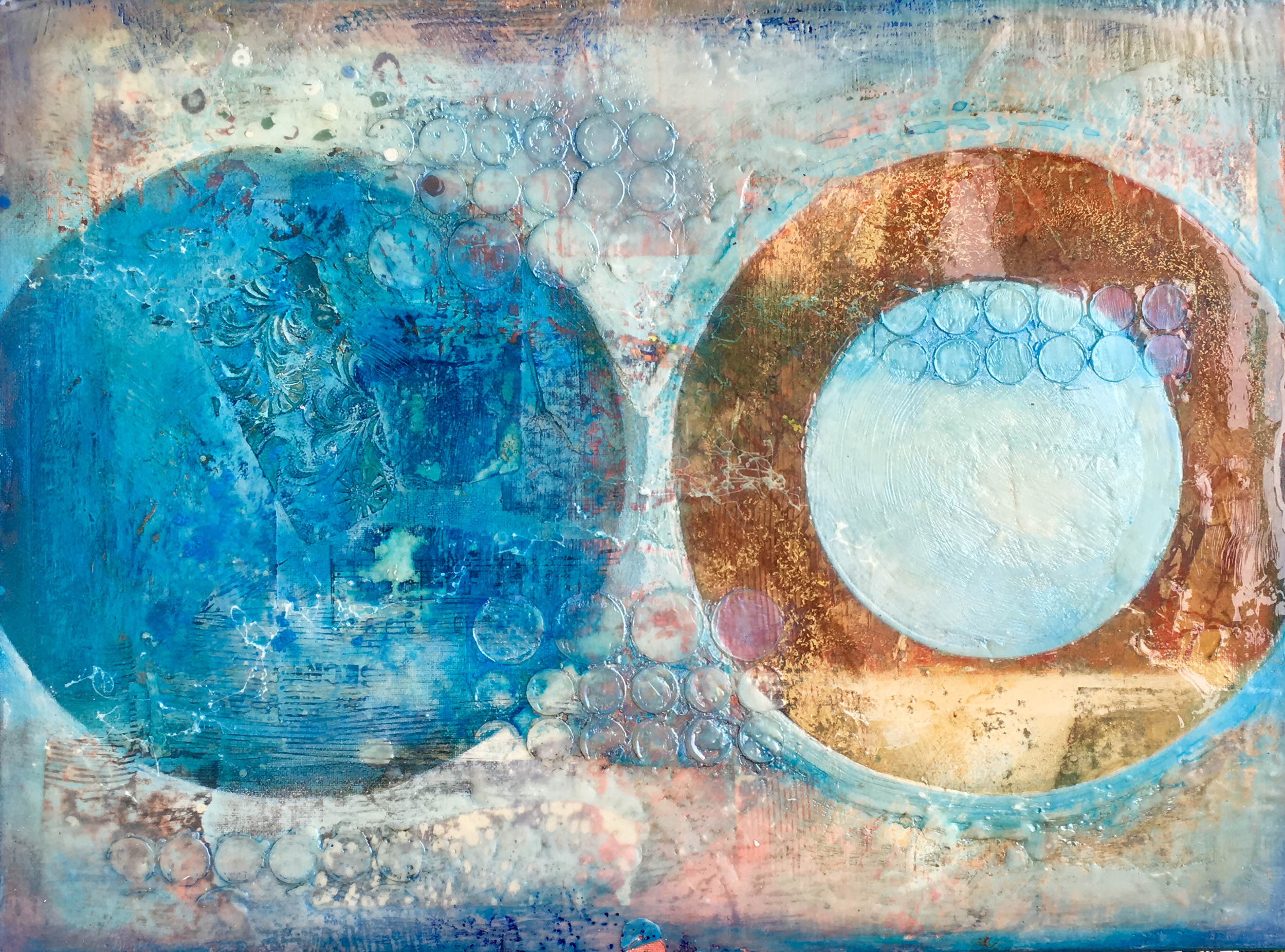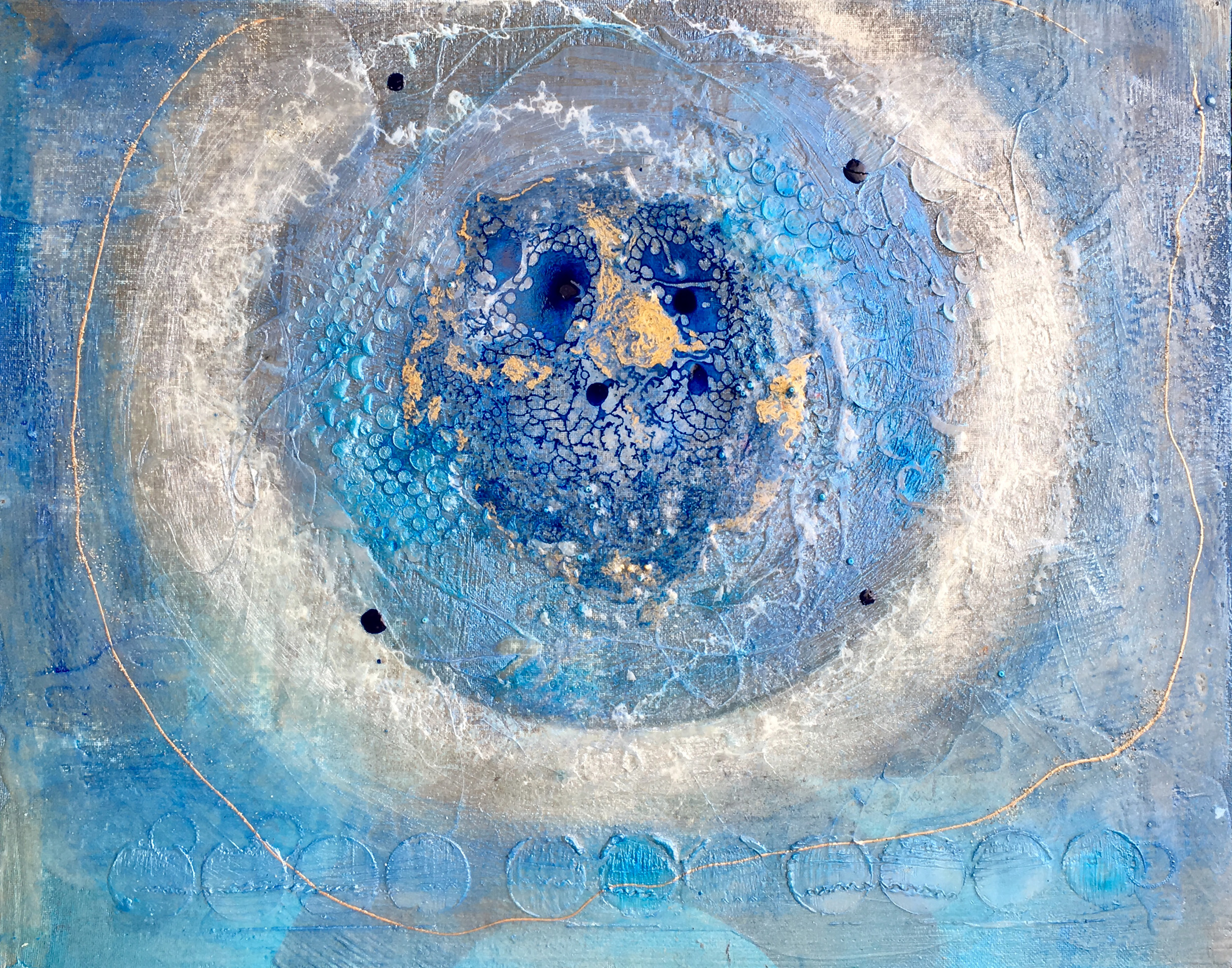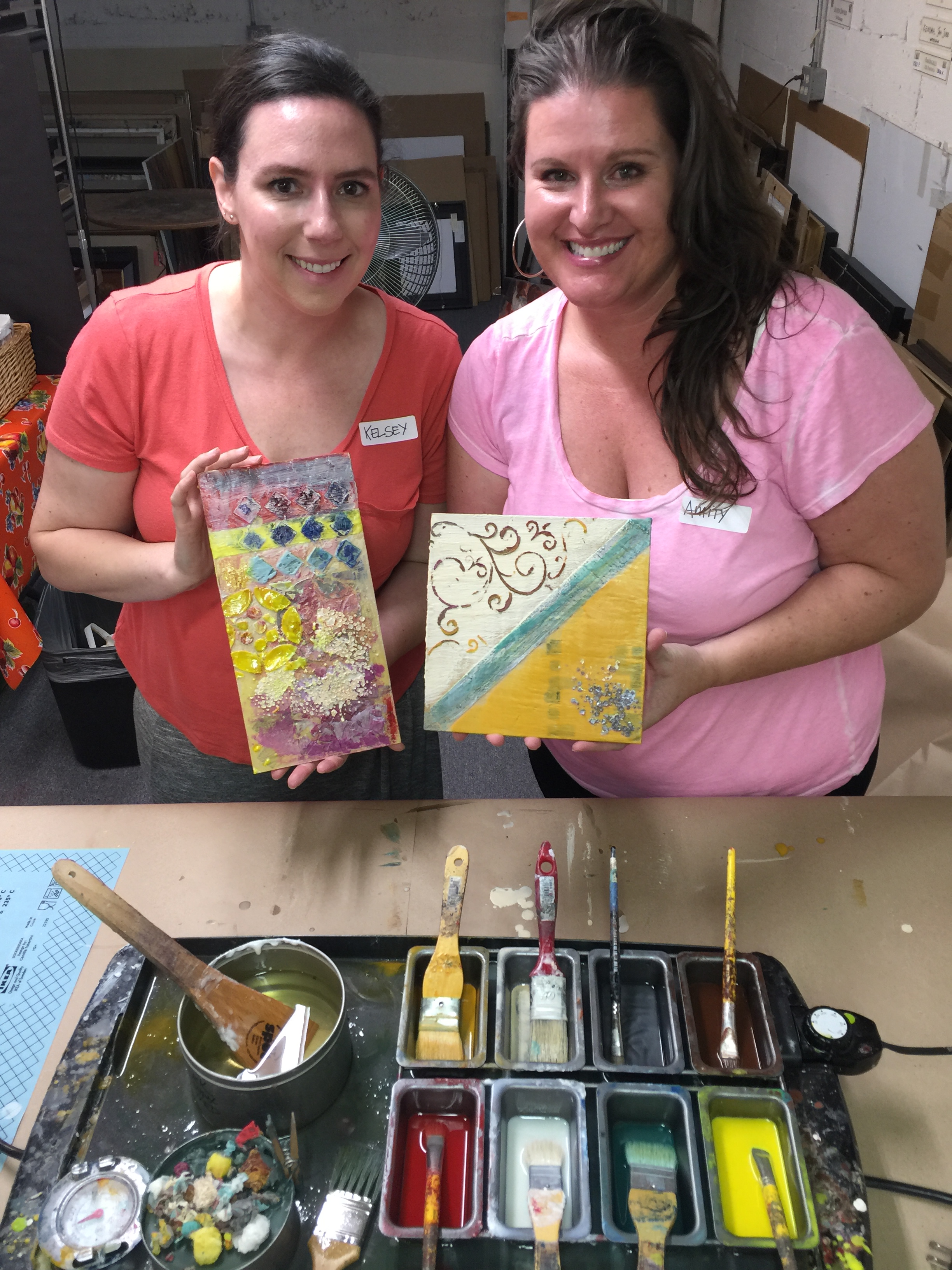What is Encaustic Painting?
What is Encaustic?
Pronunciation: en-CAWS-tick
Noun - A paint consisting of pigment mixed with beeswax and fixed with heat after its application. Greek, from the word enkaustikos – to burn in.
Encaustic dates back to the ancient Greeks, as far back as the 5th century B.C. Ancient ship builders used beeswax and resin to seal the joint and waterproof the hulls of their vessels. Ultimately, they began adding pigment to the wax – giving rise to the decoration of spectacular war ships.
Among the many modern tools used by the encaustic artist are heating palettes, metal melting pots, heat guns, torches, scraping, incising and engraving tools and paint brushes.
To “paint” with encaustic, a combination of beeswax, resin and pigment is combined and then melted to a liquid state. The resulting medium can be poured onto a horizontal surface, or it is applied to a surface with a brush. From this point, each artist has their own creative method: it can be heated with a propane torch or heat gun, engraved, layered with other items, or any number of techniques and processes. Extreme caution and control of the heat is critical as each wax blends and fuses differently.
The fusing of the wax between layers is one way that allows the artist to create depth and texture in a painting. Encaustic paintings can have many layers of wax and, depending on the piece, it is not uncommon to have anywhere from 25-50 layers. Other artists use a mixed media approach to creating layers and depth, creating designs with stencils and layers of other items within the layers of melted wax.
After the wax hardens, it can be buffed to a final sheen using a soft cloth. This buffing process can create a beautiful luminosity seen only in encaustic paintings.
